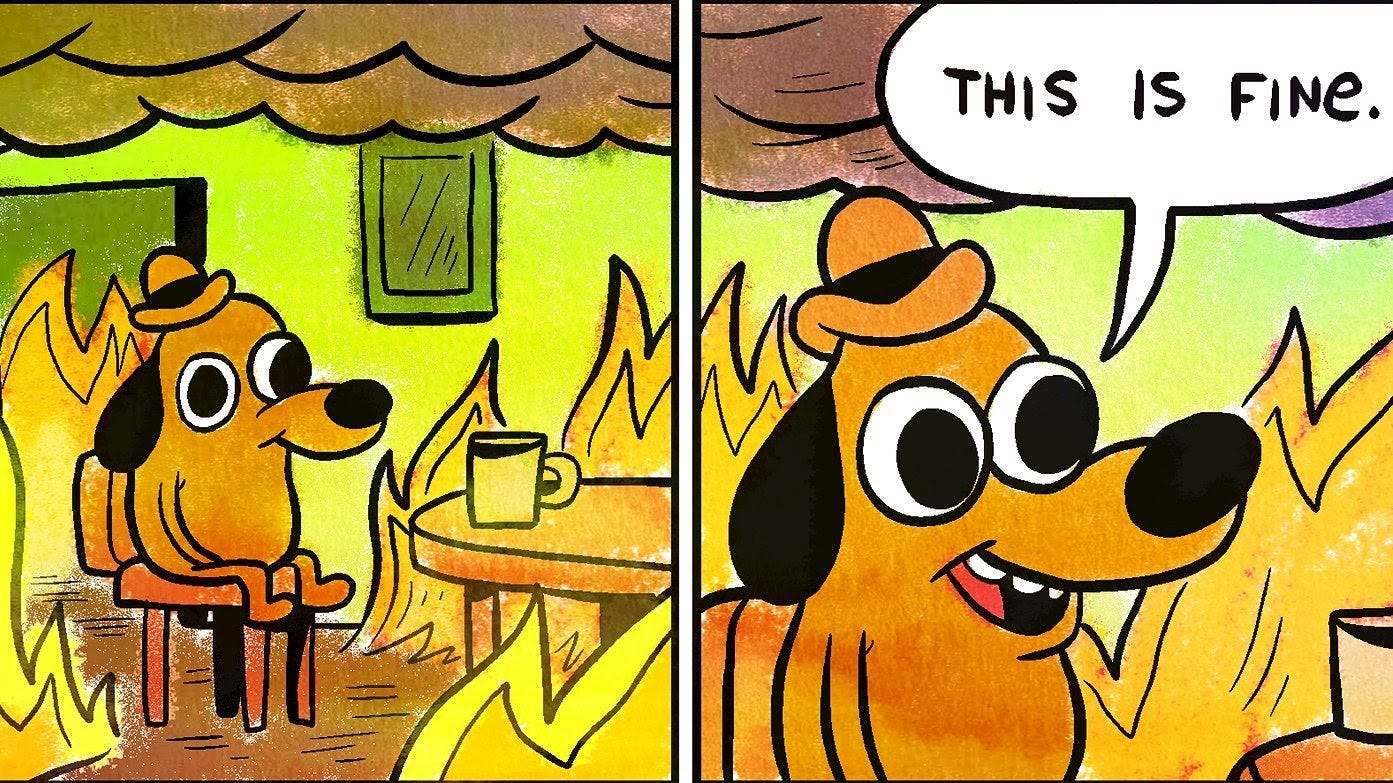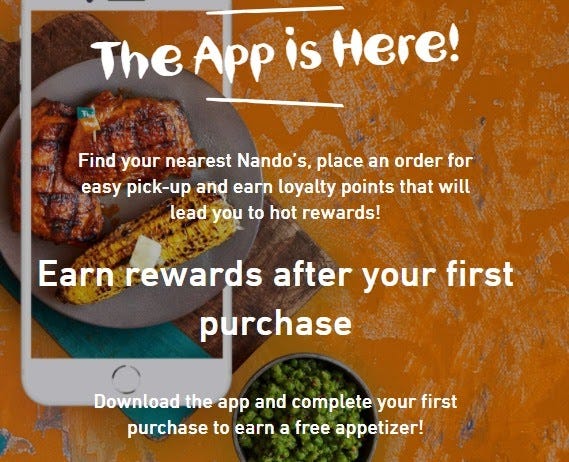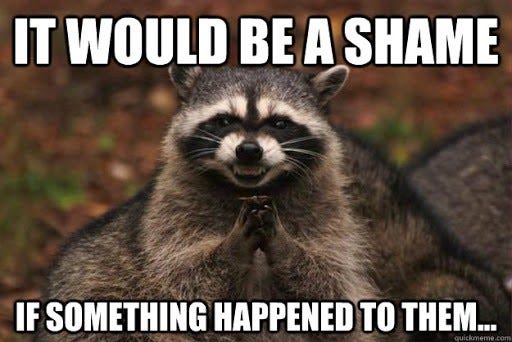Judging from the twitter DMs, several of my points from my previous post have gone over the head of some investors, particularly the one around Signature (white label delivery).
Thinking of Nando’s before going to Deliveroo
Deliveroo is at risk of getting disrupted because a large proportion of its orders/sales are from a small selection of chain restaurants — 10 chains represent 35% of ALL UK orders. Some of such chains include Nando’s, Wagamama, and McDonalds. The top 100 chains could easily be more than 50% of the UK business, if not much more. This is the case (if not moreso) for Uber Eats, and less the case for $TKWY.
For restaurants with loyal customer base like Nando’s, Sweetgreen, or Wagamama, consumers often start their food delivery process by figuring out what they want to eat, BEFORE going to the Deliveroo app. Often, they come to this decision spontaneously and other times they were aided by an ad like the one below.
Here is the issue…notice at the end of the ad it says “Order from the Nando’s website”? In the past, it used to be “Order from Deliveroo” or something along those lines. What changed was that Deliveroo started to open up its platform for large restaurants brands to deliver straight to consumers.
While this seemed like a great idea, this will quickly weaken Deliveroo’s food delivery platform by removing important restaurant inventory and consumers.
Network effects
The problem with offering white label is that it allows restaurants to build a direct relationship with its customers. So customers that want to eat Nando’s are more likely to reach out directly to Nando’s (especially since it says “Order from our website or app” on every ad). This means that customers are no longer going to the Deliveroo app, which shrinks the customer base.
This is not an issue for some, but it is for Deliveroo because so much of its business comes from chain restaurants — Nando’s is like 10% of its UK business.
Here are several common push back, which I often find lacks creativity and thought:
People do not want to download multiple apps
Deliveroo can give Nando’s very good rates to keep them on the platform
Deliveroo might lose demand on its platform, but it powers its courier network and it earns from that
Here are my responses:
For the same reason why people download the Deliveroo app, people will download the restaurant’s app if you give them a reason — cheaper delivery, loyalty programs, unique products, etc.
Deliveroo can give good rates to keep them on the platform but it means those orders are now profitless. And even with good rates, it is in Nando’s best interest to own a direct customer relationship through the app as it serves as an effective marketing and data collection tool
Deliveroo earns from doing the delivery, but that will get competed away as $UBER and Scoober ($TKWY) will bid on that contract when it next comes up. Deliveroo might still keep the contract but Nando’s have the negotiating power. Deliveroo’s earnings power will simply be the difference between its marginal cost to deliver and competitors’ marginal cost to deliver, which is frankly not much. Hence the profit potential will be slim
We are already seeing this in the US: Chipotle ($CMG) generates half of its delivery orders through its own app and that mix is going up.
Power of the app
Lets zone in on point 2.
All big chains want consumers to download their app as it gives them real estate on their consumers phone. Through this, chains will be able to generate demand in a cost effective way.
For instance, if Nando’s Baker Street finds that it does not have enough demand, it can send a notification to all consumers, with the app within the area, to order within the next 2 hours and get a free appetizer. This generates demand and the incremental margin on the additional orders is large.
This totally changes the game as the restaurant turns from a business that takes demand when it comes, to one that can generate demand when it wants to maximise profitability. This was not possible in the past.
Owning the app is critical for this future. As such, chains like Nando’s are willing to invest money upfront to achieve this goal, even if it means forgoing a slightly lower take rate.
We are starting to see this happen in the US:
($CMG) Chipotle: $1 delivery fee on the Chipotle app
($SHAK) Shake Shack: lower menu prices
To make things worse, Nando’s is effectively using Deliveroo network as an advertising tool to communicate this value proposition. Shown below is a picture of the Nando’s bag from when I ordered from Deliveroo. I won’t be surprised to see Nando’s be more explicit with the bag in the future -- “order direct and get FREE delivery”.
(What consumers see when they order Nando’s from Deliveroo)
Prediction
Here’s how I think things will play out. Sometime in the future, Nando’s will have this conversation with Deliveroo:
”Well... you are not that important to me anymore. I used to generate 70% of my delivery demand from you, but now it is 20%. 50% of orders are through my own channel, and 30% from Scoober ($TKWY) and $UBER. Now about that take-rate”
Once major chain restaurants do this… all the other chain restaurants will start the process to do the same as it is now a critical advantage. The bigger chains will amass more leverage than the smaller ones. But you know who loses the most from this? Yup, Deliveroo (and $UBER). Who is least impacted? $TKWY. Note that Deliveroo generates 35% of its UK demand from 10 chains, and over 50% from all chains.
So what does this mean for consumers? This means that there is less reason for them to visit the Deliveroo app in the future as the network weakens. That virtuous cycle in the network effect that the company talks about quickly becomes a vicious cycle.
So why did Deliveroo roll out Signatures?
Given how terrible this seems, why did Deliveroo roll out Signatures? The answer is very simple: the desert is about to turn to glass...
This is my guess:
$TKWY went to Nando’s and Wagamama and said: “work with us and I will charge you a lower take rate, and your customers will get free delivery for the next year”
Nando’s then went to Deliveroo and said: “Can you top that?”
Deliveroo obviously couldn’t, but losing these chains will dramatically impact its GTV and growth (metrics that people use to value the asset)
Deliveroo decided to devise a cunning and subtle plan. A plan as cunning as a fox who’s just been appointed Professor of Cunning at Oxford University
Deliveroo went to Nando’s and said:”I will give you white label instead. This is something you have been asking for years. In return, I want you to give us exclusivity or better rates”
Nando’s agrees and Deliveroo gets to capture the demand on its platform for now
Deliveroo then gets to book that white label sales as their own GTV and revenue
But… this is just a band-aid and is the first step towards being a commodity. It sure seems warm now, but the house is going to burn soon.
White label killed the delivery star.
Links to other related parts:
Deliveroo part 4 - Hell is coming. Gross profit might decline by more than 50%
Deliveroo part 3 - How did Deliveroo managed growth in the past
Links to other related companies:






Very interesting take. A lot of valid points, but maybe also feels a little one-sided. A few that I would challenge:
- % of customers at risk: You argue people will download multiple restaurant apps if they are given discounts. Maybe. But what % of delivery platforms users do you think will do this? You make the argument that a high % of orders are from big chains, this is true but these customers also order from multiple restaurants and value the discovery UX. They have 3-5 brands they like, but are not sure which to order from. So they might order from Nandos, but they also order from 3-5 other stores, and that variety changes over time. The delivery platforms will probably incentivise store variety (trying new stores), which will de-risk their business also. The real risk is probably only those 10-20% of customers who are super brand loyal and order only from 1-2 stores - these customers might now search on Google or download the Nandos app instead of search on the delivery platform (even if delivery platform UX is better)
- B2B logistics e.g. Doordash Drive: B2B couriers will get commoditised. I agree this is probably the case but it will take a long time. You need scale in individual cities to operate couriers efficiently and it is not that easy to get the operations right - hence why players like Stuart, Shargo or Mox have not got a super competitive product. It is a chicken/egg problem - either white label platforms integrate with delivery platforms to give cost effective delivery, or they massively reduce the quality of their delivery service. Hence, why most white label platforms are taking share from Just Eat, not Deliveroo e.g. Order Yoyo, and Flipdish mainly target restaurants with their own logistics
- Delivery plaforms have loyalty programs too: Delivery platforms will not stand still and are increasingly creating switching costs for users and improving their product e.g. loyalty programs. Wouldn't a loyalty program from a delivery platform be more attractive from one from Nandos? e.g. order 10x and get discount from any store, vs. order 10x and get discount from Nando's only
- CAC amortisation: Delivery platforms are developing more multi-category services which allows them to ammortise the CAC over multiple purchase occasions which restaurants can't do in the same way (see the recent Acquired podcast on Meituan)